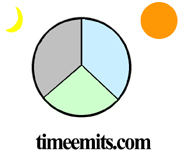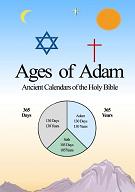1.
A __________ is a multiple of ten years.
a.
century b. decade
a. century
b. decade
c. millenium
d. era
2.
The modern Gregorian Calendar year adds leap day every 4
years until centurial years not evenly divisible by
__________ occurs.
a.
lunar based
a. lunar based
b. 365 and 1/4 days
c. 400
d. a Russian Czar
3.
The Old Testament
primarily uses the __________ for time reckoning.
a.
Mayan Calendar d. Christian Era
Calendar
a. Mayan Calendar
b. Egyptian Calendar
c. Jewish Calendar
d. Christian Era Calendar
4.
Lunar/Solar Calendars are the __________ form of
calendar system.
a. most
recent
a. most recent
b. strictly religious
c. planetary
d. oldest
5.
The three oldest calendars in recorded history are the
__________.
a.
Jewish
a. Jewish Calendar
b. Egyptian Calendar
c. Mesoamerican Calendar
d. all above
6.
The Judeo-Christian Creative Week is deeply rooted in
__________.
a.
solar eclipses
a. solar eclipses
b. lunar phase observations
c. the star Sirius
d. the planet Venus
7.
Natural astronomy of the moon, sun and stars is
fundamental to __________ and lunar/solar calendars.
a.
monotheism
a. monotheism
b. polytheism
c. astrology
d. all above
8.
The Jewish Calendar spreads 7-lunar months or about
__________ of intercalation over a 19-year Metonic
cycle.
a.
210-days
a. 210-days
b. 209-days
c. 105-days
d. 20-years
9.
The Jewish Calendar usually intercalates lunar months by
alternating _______________ months and _____________
months every 2 or 3 years.
a.
28-day, 29-day
a. 28-day, 29-day
b. 29-day, 30-day
c. 30-day, 31-day
d. none of the above
10.
Three different lengths of common Jewish Calendar years
are:__________, __________ or __________.
a. 354,
355 or 356-days
a. 354, 355 or 356-days
b. 353, 354 or 355-days
c. 360, 364 or 365-days
d. 365, 384 or 385-days
11. Three different
lengths of Jewish Calendar leap years are: __________,
__________ or __________.
a. 353, 354 or 355-days
a. 353, 354 or 355-days
b. 354, 355 or 356-days
c. 383, 384 or 385-days
d. 365, 384 or 385-days
12. Ancient
cultures that once used 19-year or 20-year l/s cycle
variants include __________.
a. Chinese
a. Chinese
b. Greek
c. Mesoamerican
d. all above
13. Every lunar
year of 12-moon-months requires about ______________ to
catch-up the lunar-side of the calendar with the
solar-side of the calendar.
a. 7-days
a. 7-days
b. 10-days
c. 1-lunar-month
d. 11-days
14. Lunar/solar
calendar systems insert __________ or __________
intercalary days over a 19-year or 20-year lunar/solar
cycle.
a. 209-days
a. 209-days
b. 210-days
c. a. and/or b.
d. 7-lunar-months
15. The Old Testament
employs the __________ form of the Jewish lunar/solar
calendar.
a. 52-year Jubilee Cycle
a. 52-year Jubilee Cycle
b. 19-year Metonic
c. original
d. all above
16. Genesis 1:4 explains
in the literal Hebrew definition, that God is __________ or
__________ day and night.
a. watching, commanding
a. watching, commanding
b. the sun, moon during
c. the earth, stars during
d. between, separating
17. Ancient
theology advances __________ from the literal Hebrew
viewpoint to show God
existing between lunar-side time and solar-side time.
a. lunar calendars only
a. lunar calendars only
b. solar calendars only
c. lunar/solar calendars
d. space calendar time
18. The Jewish
Calendar’s Feast of first Fruits compares with the
Christian New
Testament __________ celebration.
a. Christmas
a. Christmas
b. Easter
c. Passover
d. Pentecost
19. Ancient
lunar/solar calendar systems practiced a standard
midpoint position having __________ between lunar years
and solar years.
a. 354-days
a. 354-days
b. 360-days
c. 360-years
d. 365-days
20. Ages_of_Adam employs
a ____________________ tool, which has a lunar-side
component and a solar-side component.
a. numerical matching
a. numerical matching
b. lunar/solar time split
c. sacred pillar
d. 260-day-Tzolken-sacred-year
 Ages of Adam Quiz
Ages of Adam Quiz